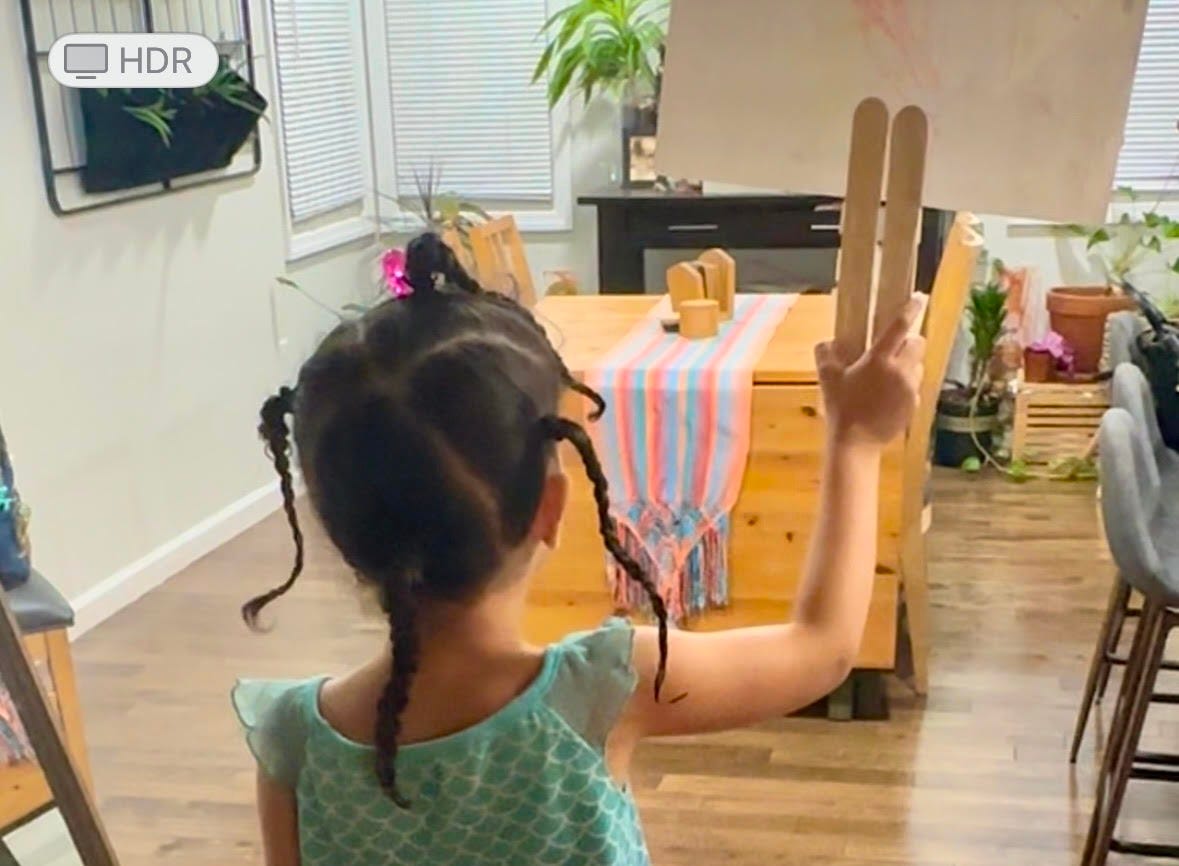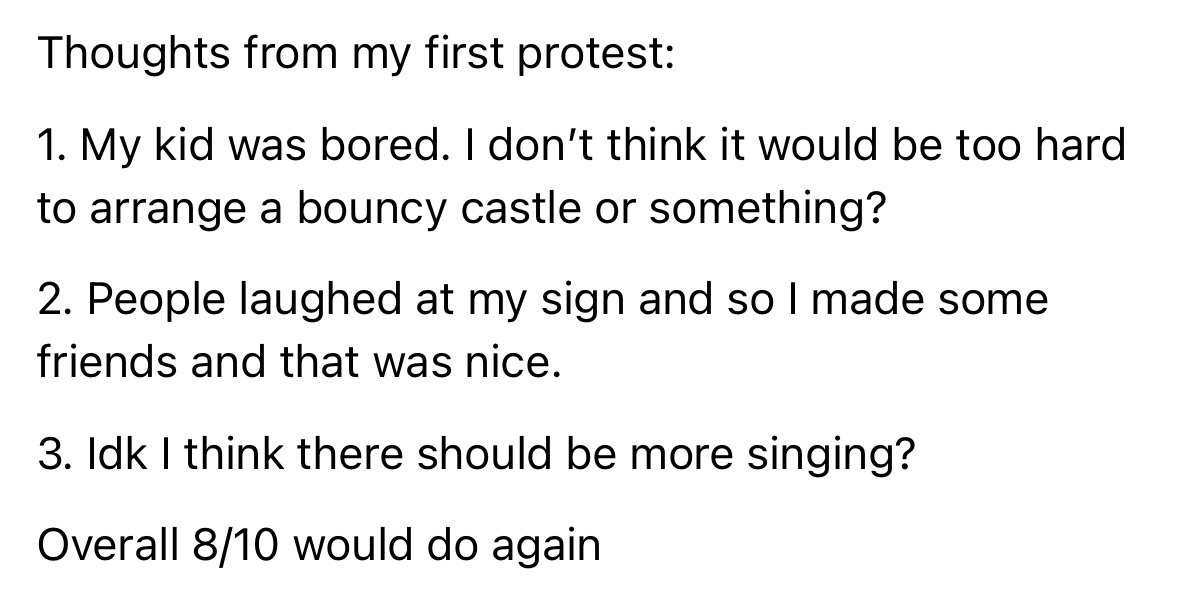The Do’s and Don’ts of Protesting With Kids: Part 3
Read this before heading to protests with children
Hi there,
This is our last piece in our series on the Do’s and Don’ts of Protesting With Kids. Read Part 1 and Part 2 before you delve into today’s article. Once you’ve done your research and determined that you’re going to bring your kids to a protest, here are some things to do when protesting with children—and what to definitely not do.
Let’s dive right in, shall we?
DO’S
Do Discuss The Protest With Your Kid Beforehand
Protesting for the sake of protesting (or the pictures!) is not the way to go. When you use a protest to teach your kiddos lessons about why you’re protesting and how you are taking action against injustice as a family, that’s when it starts to make a difference. So before the protest, carve out time to make the protest meaningful by having an age- and kid-appropriate convo with them about WHY you’re protesting, why THEY are coming along, and the role of children in advocating for justice. Give them time to ask questions and do some research together. It’s also smart to talk with them about what they can expect and what to look out for.
Do Frame The Protest In The Context of History and The Current Conditions
Tabitha here: One of our kiddos is old enough to understand historical references and issues of injustice so we try to get into this with him. He’s old enough to understand that this generation didn’t invent protesting, though they play a significant role in movements, AND that the issues at hand have an historical framework that is necessary to understand. Here are some of our favorite books on ways people resisted injustice in history. Never underestimate our older kids’ capacity to make deeper meaning of protests.
Do Try To Teach Age- and Kid-Appropriate Lessons Through Their Lens
As we said, before heading to a protest, we take time to talk with our kids about the issue(s) that will be addressed at the protest. We read books, ask questions, answer their questions, share age-appropriate news clips, and try to give as much info as possible while being aware of their cognitive bandwidth. We also get creative. Kids can think about what messages they want to convey on their signs. This is a great way to engage them beforehand and start conversations about the WHY of the protest. Pull out the markers and crayons and glitter and gems and let them have some fun creating their signs. We’ve seen some amazing signs made by kids.
For younger kids, print some coloring sheets that show children engaging in activism work like marching, making signs, etc. Use the coloring sheets to start conversations with your kids: “What are they doing?”, “Why do you think they’re doing that?”, “Here’s why it’s important for us to learn from them.”
Do Bring Your Usual Items To Keep Them Engaged.
Adam here: We recognize that we will be away from home for a minute when we go to a protest, so we always make sure to pack a bag with snacks, water, and quiet things for our kids to do to keep them engaged.
Important: If you’re going to a rally or march, be sure to check in with the organizers of the protests before the day to ask about strollers and the permissible size and type of bag, for security reasons. And remember, kids will be kids. If they get distracted midway through the protest, try not to attach judgement. Bring relevant books and coloring sheets, pencils, markers, stickers, etc., so that even when they’re doing their thing, they’re learning a lesson or two about activism.
DON’TS
Don’t Attend a Protest Expecting for Your Kid to Be Entertained by the Organizers
Back in April, Tabitha helped organize the D.C. Hands Off/People’s Veto Day Protest. A post on Threads from a parent after the multi-city protest caught Tabitha’s eye. You can see the exact post below (we deleted their name for privacy purposes):
While it’s awesome that they wanted to include their children, it’s unrealistic to attend a protest expecting the focus to be on fun times for your kids or for you. The goal of protest is always resistance, not entertainment. Should some protests be made accessible to families? Sure. But unless it’s specifically promoted as a family-friendly space, be aware of what your child needs to stay engaged while they learn lessons about the issues at hand. AND keeping your child engaged during a protest is the role of the parent, NOT the organizers.
2. Don’t Criticize Without Contributing.
Tabitha here: As an organizer, we want leaderful movements–ones where everyone identifies a role they can play in bringing the protest to reality. We also live in the era of social media, where we have copious amounts of criticisms about how and why people do just about everything under the sun. People, unfortunately, can sometimes dish out more criticism than contribution. So if you see room for improvement and growth, get involved! I am almost certain that when folks roll up their sleeves and join organizers in our work, they’ll see how hard movement building is and will be more likely to have grace and compassion about the growing pains that all protest actions experience. When you contribute in a more meaningful way, you also show your children what it means to make antiracism actionable—and what it really means to be an active part of a community.
3. Don’t Assume a Non-Kid-Friendly Protest Means You Can’t Bring the Message Home for Your Little Ones
Usually, national protests feature aligning actions across the country on a specific day. If you want to instill these lessons in your children and help them feel included—even when hitting the streets isn’t safe—you can start by discussing the reasons for the protest. Make signs, even if they won’t be attending. Come up with some chants and even march around your apartment or house to bring the message to life. Hitting the streets is super important. But if it’s not likely to be safe for kids, the goal is to make the lesson of resistance actionable and applicable anyway.
4. Don’t Neglect Your Kid’s Emotional and Cognitive Bandwidth
Adam here: One of our kids processes sensory stimuli in a unique way, so crowds can sometimes be a bit much for them. As we’ve said before, though Tabitha is often working at the protest, I tend to keep the kids at the edge of the crowd so they have some space to move and we have space for the stroller. I try to make sure the kids and I don’t get in anyone’s way AND I always map out safe exit routes in the unlikely event that it becomes unsafe for our kids. If your little ones are so overwhelmed that they can’t listen and process the lessons of protests, it’s harder for them to form affirming memories and a strong sense of activism within themselves.
If we want our kiddos to be raised understanding the value and power of protest, community, solidarity, justice and action, we absolutely have to teach them the lessons through words AND actions. We believe in fusing kid-appropriate, fun activities with lessons about justice and equity. So to the person who expected a bouncy house at a protest, we want to stress that that activity hits the FUN mark but doesn’t actually teach anything about these values. Instead, bring a few books about children fighting for justice (we like this one). Read to your kid or have them read themselves if they’re old enough. Feel free to also take breaks, especially for long protest days. The goal is the lesson that together, we can fight injustice by resisting and making our power known and felt.
REFLECTION
We are living under truly terrifying times. People are being snatched off the streets and disappeared or deported, and this government is infringing on the rights of mostly everyone, especially those who exercise their right to free speech, those who support Palestinian liberation and immigrants. Our right to protest is at risk. Now is the time for all people with privilege to protest with all of their might. Now is the time for us to examine barriers to entry for protest, the privilege of who gets to protest without getting harmed, the realities of policing at protest and so much more. We also need to consider how our kids are internalizing this moment. Some kids are living in fear while others barely know who the president is. So we offer some reflection questions for you, if you parent children. Sit with these and jot down some thoughts that come to you as a response to each question:
How is your kid internalizing this moment?
How are we balancing keeping them safe with living with the realities of these times?
How are we equipping them with the tools to fight injustice as they see it in their lives?
How are we balancing showing up as community members while showing up as parents in these times?
These are all questions for you to ponder as you consider bringing your kids to protests.
That’s it from us for today. If you’ve been protesting, marching and resisting, THANK YOU. Here’s to resistance, accessibility, and discernment. Here’s to a reckoning about privilege. Here’s to building a country where all of us are safe and we don’t have to worry about how to protect our kids from fascism. We’re sending you love. Connect with a human off the internet today, okay?
Tabitha & Adam




